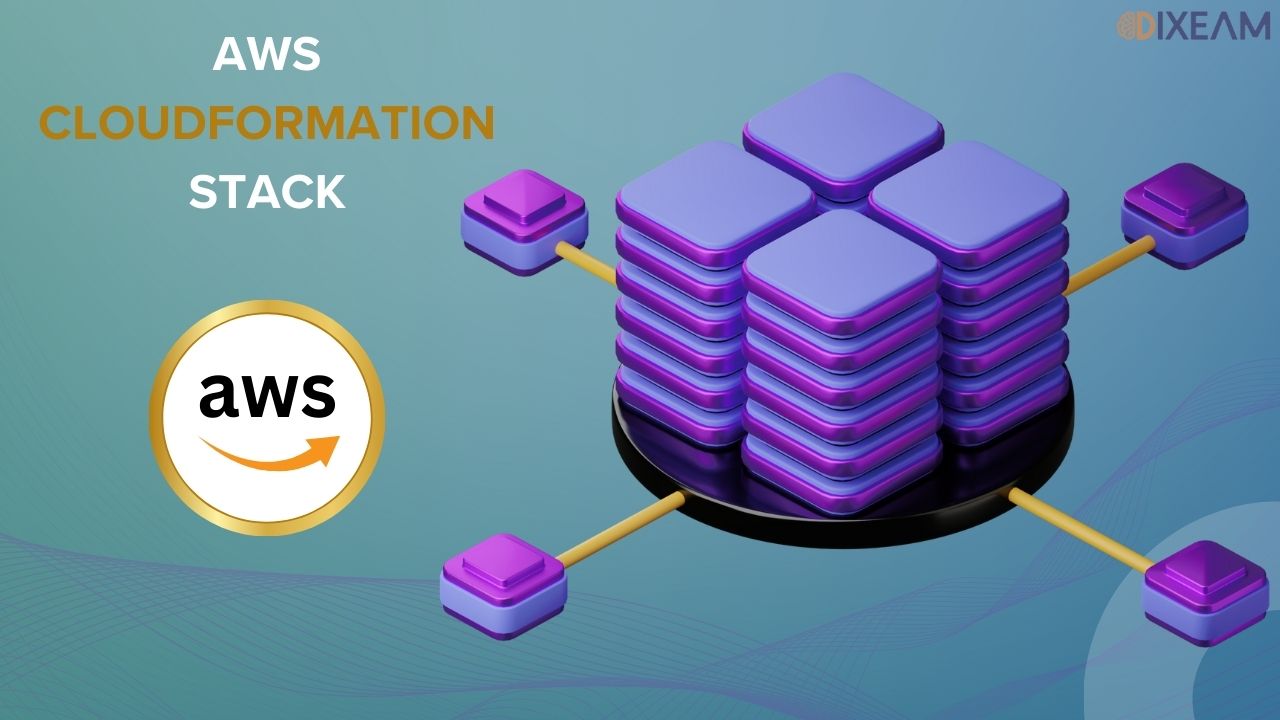What is AWS CloudFormation Stack? A Comprehensive Guide

AWS CloudFormation revolutionizes infrastructure management by allowing developers to define resources through code templates, known as CloudFormation Stack. As cloud adoption accelerates, effectively managing dynamic infrastructure demands becomes critical.
AWS CloudFormation empowers developers and operators to codify, maintain, and manage resources through templated "stacks," promoting automation and consistency. But for the uninitiated, much mystique surrounds the CloudFormation stack model. This definitive guide aims to unwrap essential concepts, architecture, use cases, advanced capabilities, and best practices to establish foundational clarity.
Understanding AWS CloudFormation Stack:
AWS CloudFormation helps you build infrastructure using code templates. These templates define a collection of resources making up a stack. A stack constitutes a deployment unit, where all constituent assets get created and updated in an orchestrated manner. Its fundamental aspects include:
1. Stack Templates:
The AWS resources and their relationships are specified using stack templates. Stack templates are used to build, modify, and remove stacks. They can be expressed in YAML or JSON.
2. Stack Resources:
CloudFormation creates and manages the personal AWS resources known as stack resources. Their examples include EC2 instances, RDS databases, Lambda functions, etc.
3. Stack Sets:
Templates that can be reused to create identical copies of stacks across AWS regions, accounts, and organizational units. CloudFormation translates high-level definitions into fully provisioned, auto-scaling environments using these fundamental building blocks.
Creating and Managing Stacks:
Users can create, update, delete, or clone stacks through the AWS Management Console, Command Line Interface (CLI), or Software Development Kits (SDKs). Prominent capabilities include:
1. AWS Console:
Visual interface to upload templates, launch stacks, monitor resource status and events, roll back changes, etc.
2. CLI:
Automate stack operations like launching or updating a stack using CloudFormation CLI commands.
3. SDKs:
Programmatically manage stacks using AWS SDKs for Java, Python, JavaScript, .NET, Go, PHP, etc. This flexibility in managing refers to manual administration to complete DevOps integration workflows.
Advanced Features and Best Practices:
CloudFormation offers advanced capabilities for enhanced control over stack lifecycles and multi-stack workflows:
1. Nested Stacks:
Stacks constructed within other stacks are known as nested stacks. They make it simpler to maintain and manage your infrastructure by enabling you to design recyclable building blocks that can be used across many stacks.
2. Cross-Stack References:
Logically link sibling stacks for interdependent infrastructure by exporting values from one to be referenced in another.
3. Stack Policies:
Strictly control stack update behaviors like preventing deletes or replacements of some resources. Additionally, the following best practices ensure robust stack management:
- Parameterize configurations using input variables rather than hardcoding resource properties.
- Set unique stack name prefixes for clearer visibility and prevent position conflicts.
- Use descriptive tagging conventions for easier discovery and reporting.
- Enable termination protection to avoid accidental deletion.
Integrating CloudFormation with Other AWS Services:
A fundamental benefit of CloudFormation is deep integration with services across AWS for complete end-to-end automation:
1. Lambda:
Uses functions to perform custom actions, like validating templates pre-deployment or processing notifications post-stack creation.
2. EC2:
Automatically launches workloads on EC2 or integrates with Auto Scaling groups to dynamically scale-out infrastructure.
3. Other Services:
Creates dependencies on Route 53, S3, SQS, and more to model complete application environments. This unified orchestration of AWS building blocks drives consistent deployments.
CloudFormation Use Cases
DevOps teams use CloudFormation across use cases like:
1. Scalable Deployments:
Programmatically deploy multiple, identical, and fully configured stacks across regions to deliver low-latency global application footprints.
2. CI/CD Pipelines:
Integrate templates that can be automatically validated, tested, and deployed across lower environments to speed software release cycles.
3. Infrastructure Documentation:
Templates become the single source of truth documenting the intended state of production infrastructure versus manual diagrams. By codifying environments using the CloudFormation stack, organizations gain consistency, productivity, and scalability.
Future Innovations:
As infrastructure grows more dynamic, two significant innovations will shape CloudFormation's roadmap:
1. Expanded Integrations:
Support for new AWS services like storage, analytics, and machine learning will enable richer stack definitions.
2. Increased Extensibility:
Custom plugins and partner extensions will facilitate incorporating third-party and niche tools. They indicate more freedom in modeling customized, modern infrastructure using CloudFormation.
FAQs:
1. What are AWS CloudFormation Stacks?
AWS CloudFormation Stacks enable developers to define and manage resources through code templates, facilitating automated infrastructure deployment and management.
2. What are some best practices for CloudFormation Stack management?
Best practices include initializing configurations, employing unique stack name prefixes, using descriptive tagging conventions, and enabling termination protection to ensure robust stack management and visibility.
3. How do I create and manage stacks using CloudFormation?
Stacks can be created, updated, deleted, or cloned via the AWS Management Console, Command Line Interface (CLI), or Software Development Kits (SDKs), offering flexibility and automation in stack management.
Final Words:
Effectively employing the CloudFormation stack is essential for reducing the complexities of modern application infrastructure. This comprehensive guide unpacked the frame of stacks, beginning with fundamentals like templates, resources, and sets before exploring management interfaces, advanced architecture patterns, and real-world integrations. Developers can write code for their AWS environments in the same manner as they would for application logic by using CloudFormation. Mastering its stack model, you can liberate clouds from chaos and unlock innovation. So rise above infrastructure complexity - and let your stacks lead the way!